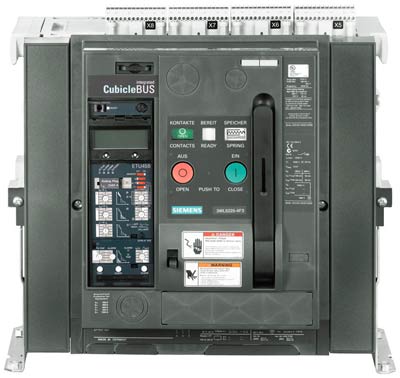Primary vs. Secondary Circuit Breaker Testing Guide
When looking to develop a proper testing and maintenance schedule for low voltage circuit breakers there is only two options; primary current injection testing or secondary current injection testing. Proper maintenance is essential for power circuit breaker reliability and safety. The advantages and disadvantages of each testing method will be described below.
Primary Current Injection Testing
Primary current injection testing is the more comprehensive yet time-consuming process. Both electromechanical (thermal-magnetic) trip units and solid-state (electronic) trip units can be tested through primary current injection. Testing low voltage circuit breakers this way also verifies all wiring, current sensors, and all current carrying components throughout the circuit breaker.
Testing through primary current injection has one major drawback. The testing is almost always done one phase at a time. This means polarity issues will not always be detected. All sensor and wiring polarities should be tested separately to verify proper functionality. This all being said; primary current injection testing is more often than not the most expensive testing option for low voltage power breakers. Factors such as large testing equipment, full circuit breaker removal, and more time consuming single-phase testing drive the maintenance price up. Traditional maintenance plans usually involve commissioning breakers with primary current injection testing followed by secondary testing periodically.
Secondary Injection Testing
Secondary injection testing can only be performed on solid -state (electronic) trip units. This leads to several older or molded case circuit breakers not being able to be tested through secondary injection. Secondary testing involves a small test set to plug into the circuit breakers trip unit and simulate the three phase currents coming to the trip unit from the secondary of the CTs. The three-phase simulation allows verification of the trip units polarities. Major disadvantages are that only the trip unit’s logic and wiring are being tested. That means all current carrying components and wiring will not be verified. Giving primary current injection testing the upper hand over secondary injection testing.
If either testing method is used and signs of improper functionality come up then the trip unit should be marked as defective, replaced, and retested before re-energizing. After all testing has been completed removed circuit breakers should be reinstalled. If there are any electronic controls for the breaker they should be tested. Electrically operating a breaker in the test position will verify the integrity of the control wires ability to properly open and close the breaker. Once this is completed the breaker can then be racked in completely and be energized in a safe manner.
Industrial Tests, Inc provides comprehensive Circuit Breaker Testing services for industrial, commercial and municipal applications. Learn more about circuit breaker testing.
Recent Posts
ELECTRICAL SCHEMATIC OF THE EARTH AND SOLAR SYSTEM
Greg Poole Industrial Tests, Inc. Rocklin, CA, ...PLANCK, MUON, AND FINE STRUCTURE CONSTANT
Greg Poole Industrial Tests, Inc. Rocklin, CA, ...Electro Dynamo Theory & Schumann Resonance
Greg Poole Industrial Tests, Inc. Rocklin, CA, ...Speed of Light and Gravity
Greg Poole Industrial Tests, Inc. Rocklin, CA, ...Solar System Electrostatic Motor Theory
Greg Poole Industrial Tests, Inc. Rocklin, CA, ...
Archives
- July 2020
- January 2020
- December 2019
- November 2019
- October 2019
- September 2019
- August 2019
- September 2018
- August 2018
- July 2018
- June 2018
- May 2018
- April 2018
- March 2018
- February 2018
- January 2018
- December 2017
- November 2017
- October 2017
- March 2015
- February 2015
- December 2014
- November 2014
- October 2014
- September 2014
- August 2014
- August 2013


Recent Comments